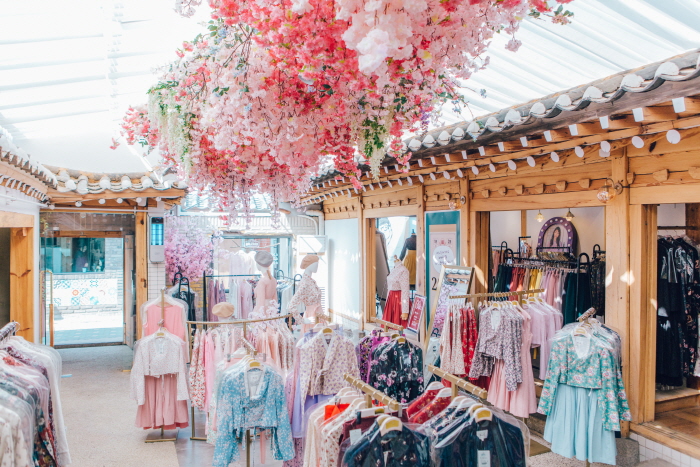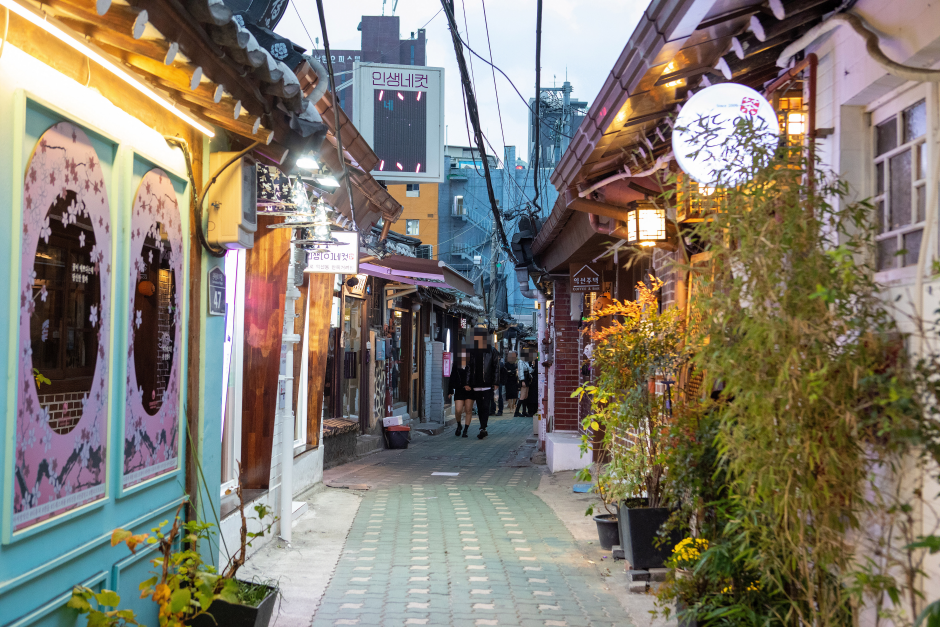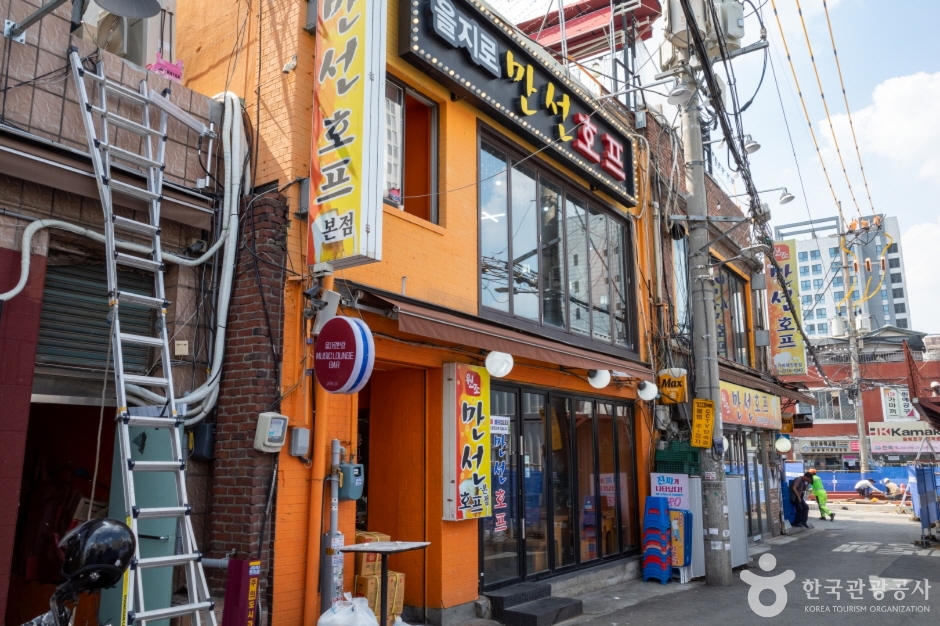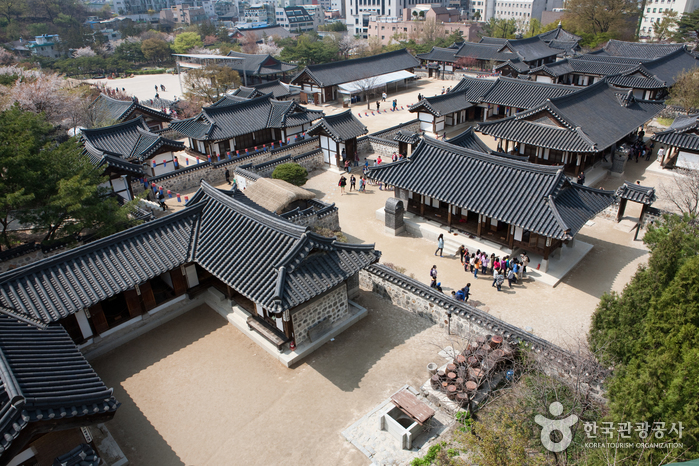Olens - Yeongdeungpo Underground Shopping Mall Branch [Tax Refund Shop] (오렌즈 영등포지하상가)
5.1Km 2024-04-17
Store #84 of B1, B20 Yeongjung-ro, Yeongdeungpo-gu, Seoul
-
Lloyd - Yeongdeungpo Branch [Tax Refund Shop] (로이드 영등포점)
5.1Km 2024-04-16
Store #60, B1, B20 Yeongjung-ro, Yeongdeungpo-gu, Seoul
-
Etude House - Yeongdeungpo Branch [Tax Refund Shop] (에뛰드하우스 영등포)
5.1Km 2024-04-17
Store #98, #99 of Yeongdeungpo Underground Shopping Center, B20 Yeongjung-ro, Yeongdeungpo-gu, Seoul
-
OLens - Yeongdeungpo Undergrand Shopping Center Branch [Tax Refund Shop] (오렌즈 영등포지하상가점)
5.1Km 2024-06-27
#84, 20, Yeongjung-ro, Yeongdeungpo-gu, Seoul
-
London Bagel Museum Anguk Main Store (런던베이글뮤지엄 안국점)
5.1Km 2024-02-20
20 Bukchon-ro 4-gil, Jongno-gu, Seoul
London Bagel Museum is a bagel specialty shop adorned with a wooden-tone interior and a garland in the shape of the British flag. The bagels are made using the traditional British method of fermenting the dough, boiling it, and then baking it in the oven. Jambon butter sandwich bagel, made with sesame bagel filled with ham and butter, is a signature menu item.
Teterot Salon (때때롯살롱)
5.1Km 2022-12-26
21-12 , Supyo-ro 28-gil, Jongno-gu, Seoul
Teterot Salon is a representative hanbok brand in Seoul operated by Chima Jeogori Seoul. They boast high levels of completion by closely monitoring the process from design conception, production, and sale of products. In particular, they have their own factory that allows for high quality products and more frequent updates on new products.
Ikseon-dong (익선동)
5.1Km 2024-10-29
Ikseon-dong, Jongno-gu, Seoul
Ikseon-dong is a place where the harmony of alleys and hanok houses exudes beautiful charm and is a must-visit spot for tourists of all ages and genders. It is also an area that connects the younger and older generations.
Euljiro Nogari Alley (을지로 노가리골목)
5.1Km 2024-10-29
129, Eulji-ro, Jung-gu, Seoul
+82-2-1330
The alley that connects from Euljiro 3(sam)-ga Station, Exit 4 is full of people eating dried young pollack and drinking beers at tables along the street every night. Under the bright lamp lights, plastic tables filled with customers can be seen. The first Nogari pub, Eulji OB Bear, opened in November 1980 to form what is now the Euljiro Nogari Alley. Euljiro also has the largest Printing Alley in the nation, providing printing for almost all books and printed materials across the country. The shift workers would stop by the pub for dried young pollack and cold beer before heading home after work, leading to more restaurants opening nearby until the alley was formed. In the beginning dried young pollack was cooked over a briquet fire and served with red pepper paste, but now, the alley is full of pubs and restaurants serving various types of food, but nothing beats nogari and cold draft beer.
Namsangol Hanok Village (남산골한옥마을)
5.1Km 2024-10-25
28 Toegye-ro 34-gil, Jung-gu, Seoul
+82-2-2261-0500
Namsangol Hanok Village opened in 1998 on the northern side of Namsan Mountain in the center of the capital. This village has five restored hanok (traditional Korean house) premises, a pavilion, a traditional garden, a performance art stage, and a time capsule plaza, making it a perfect spot for locals and tourists to take a leisure walk. Upon entering from the front gate, visitors will get a taste of Korea's traditional life while escaping from bustling city life. The traditional garden with its pavilion and old houses creates a peaceful ambiance before the forested Namsan Mountain. A time capsule commemorating Seoul’s 600th anniversary was buried in 1994 at the highest point of the village and is scheduled to be reopened 400 years later in 2394.
The five hanok premises at Namsangol Hanok Village once belonged to aristocrats and government officials of the Joseon dynasty. Each house was originally located in a different neighborhood, but they were all moved to this area and restored to their original form. The houses were rebuilt using their original materials, except for one house, where the materials were too old and deteriorated to be reused. The premises were carefully restored and replicated according to their original form to depict the owners’ social class and personality. These buildings are now used as an exhibit to portray the living environment during the Joseon dynasty and as a venue for educational and cultural programs for children and tourists.
Some of the unique programs and activities to participate in include wearing hanbok, folding hanji (traditional Korean paper), writing in Korean, traditional tea ceremony, traditional etiquette school, and herbal medicine experience. There are also taekwondo demonstrations and other various performances held around the village. Visitors can also try traditional games such as yunnori (traditional board game), or understand more about the area through a guided tour.
![Semi Jewelry [Tax Refund Shop] (새미쥬얼리)](http://tong.visitkorea.or.kr/cms/resource/84/2887784_image2_1.jpg)
![Olens - Yeongdeungpo Underground Shopping Mall Branch [Tax Refund Shop] (오렌즈 영등포지하상가)](http://tong.visitkorea.or.kr/cms/resource/34/2880034_image2_1.jpg)
![Lloyd - Yeongdeungpo Branch [Tax Refund Shop] (로이드 영등포점)](http://tong.visitkorea.or.kr/cms/resource/33/2880033_image2_1.jpg)





 English
English
 한국어
한국어 日本語
日本語 中文(简体)
中文(简体) Deutsch
Deutsch Français
Français Español
Español Русский
Русский